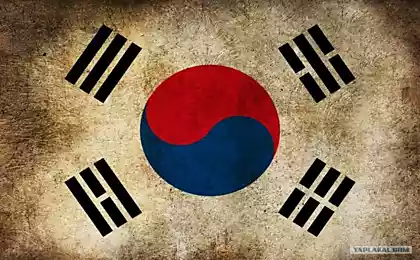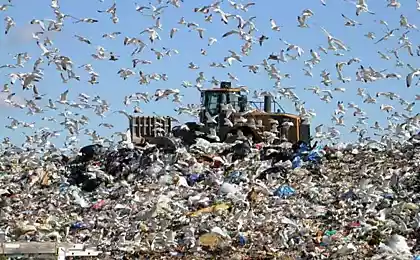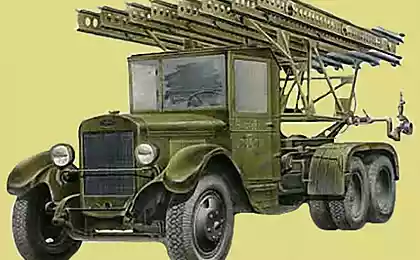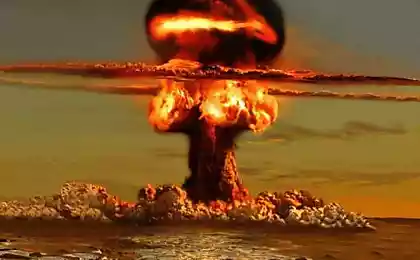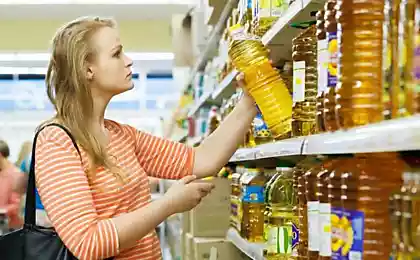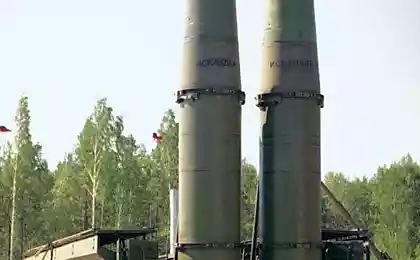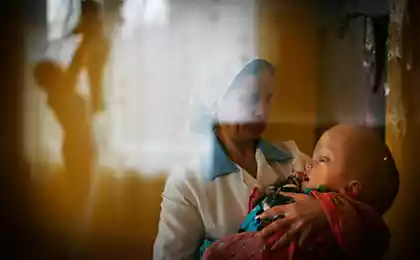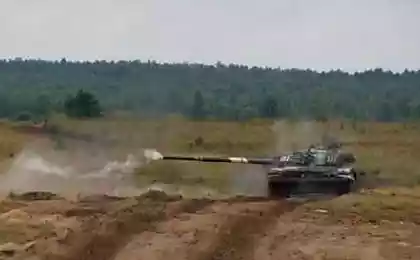926
Warm up in the Korean test site
Long "cold" war was preceded by a short but very vigorous military conflict in the Far East.
Sixty years ago, on 1 November 1950, for the first time in a dogfight aircraft met the two superpowers: Soviet pilots managed four MiG-15 and the three American "Mustang» (P-51 Mustang). It happened during the Korean War (1950-1953), which began as a civil and almost became the prologue of the third world.
US planes "Twin Mustang» F-82 and "Mustang» P-51. Photo: USAF
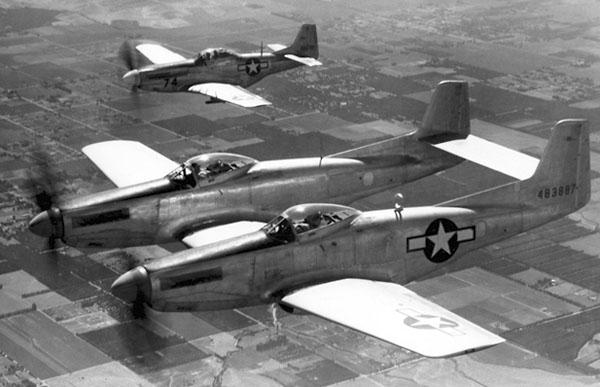
Korean guardians
The issue of how after the Second World do with Korea, annexed by Japan in 1910, the leaders discussed the USSR, USA, Great Britain and China repeatedly. During the Cairo Conference in November 1943, Roosevelt, Churchill and Chiang Kai-shek agreed that Korea would be given the freedom and independence - but not immediately, and "in due time", through the introduction of the transitional system of international trusteeship. It first was about forty or fifty years. At the Tehran and Yalta Conference, Stalin actually joined the Allied decision of principle he had no objection, but stressed, however, that the sovereignty of tightening is not necessary - "the sooner, the better».
I must say, with the idea of international trusteeship contrary to accepted international principles of the right of nations to self-determination. Why not just release the Korean people from the yoke of Japanese and not give them the right to decide the fate of their country? It is an unfortunate contradiction was generated largely distorted picture of the situation on the Korean peninsula, which is reflected in the special report of the study group Arnold Toynbee (Arnold Joseph Toynbee, 1889-1975), with whom the British Foreign Office and the US State Department learned in January 1945. The report stated that the Koreans do not have the necessary political experience in the management of a modern state and not able to perform the administrative functions at the professional level. It was noted that the Koreans characterized by increased susceptibility to both squabbles between individuals and between different political factions. The report indicated that the Koreans need to instruct on the right path, to imbue them with administrative skills, learn how to effectively govern. Hence the idea of trusteeship, to become interested in strengthening its position in the region, the country is extremely low.
After the end of World War II and Korea's liberation by Soviet troops in the north and the south of the US, in December 1945 it passed the Moscow Conference of Foreign Ministers of the USSR, the USA and the UK, dedicated to the Korean issue. Koreans themselves were not invited to. In order to solve the urgent problems of decolonization, it was decided to form a provisional Korean democratic government and bilateral US-Soviet Commission. But by and large did not work, the negotiations have stalled. The Soviet Union had already come up with proposals on the simultaneous withdrawal from the peninsula of Soviet and American troops and invite representatives of the Korean people to participate in discussions on the unification of the country, but the UN General Assembly, US officials have made rejection of the proposal.
Gradually, under the looming US-Soviet confrontation, the two military occupation zones become a separate state. Formally split Korea into North Korea, led by Kim Il Sung and the Republic of Korea, headed by Syngman Rhee was issued in 1948. Each state considered itself the sole legitimate representative of the Korean people and to make plans for the forcible reunification.
In September 1949, Kim Il Sung appealed to the Kremlin to authorize a military invasion of northerners to the South in order to unite the country, but was refused, motivated by the fact that he does not have the required superiority of the armed forces.
In the Korean War the USSR de jure did not participate. However, the role of Soviet aces in the conflict unleashed by Kim Il Sung, with the approval of Stalin, is difficult to overestimate. For three years they served as North Korea's shield, not allowing the Americans to bomb civilians and destroying household objects. Photo: USAF
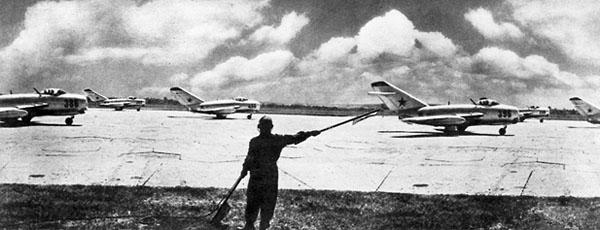
However, in April and May 1950 during confidential talks in Moscow with Kim Il Sung, Stalin reversed its position and gave "good". World's strategic balance, in his opinion, has changed in favor of socialism - October 1, 1949-th power in China, the Communists came, moreover, were carried out field trials of the first Soviet nuclear bomb. Stalin did not want nevertheless alone wage a war on the Korean peninsula, he insisted that Kim Il Sung should enlist the support of Mao Zedong. The Soviet Union will help, but if the game will come to China. Do not nap in the meantime, and Syngman Rhee, it has already received assurances from the Americans in military aid, the country is actively arming.
Tension mounted. Only since the beginning of 1949 to early 1950 was more than 1,800 border armed conflict, that is, the armed clashes of 2-3 per day. Finally, June 25, 1950 began the offensive forced Korean People's Army on the borders of the 38th parallel to the Nakdong River Basin. The first weeks were successful for Kim Il Sung, under the control of the government of Syngman Rhee left only 10% of South Korean territory.
The UN Security Council has reacted with lightning speed - in the first day of the war, North Korea has been recognized as the aggressor, and on June 27 adopted a resolution number 83 with the recommendation of the UN member states to provide military assistance to South Korea. So the Americans unleashed hands - now they got the right to defend their interests in the Far East under the guise of peacekeeping UN flag.
USSR de jure in the war did not participate. Soviet diplomats from the first days of the conflict, emphasizing the innocence of the Union, sought to prove that the conflict is a purely internal matter, and the Korean people have the right to speak in favor of a scenario of national sovereignty. But Moscow and Beijing were well aware that the disappearance of North Korea - "outpost of socialism" in Northeast Asia - a huge geopolitical inflict damage Sino-Soviet coalition. In such a critical situation, it was decided to provide direct military support for North Korea's exhausted army China - the ground forces and the Soviet Union - Air Force. In accordance with the decision of 25 October 1950 it began a massive entry of 250 thousand to Korea. "Chinese People's Volunteers," and the Soviet Union began to shift to the Far East pilots and planes.
The first ruler of the North Korean state, Kim Il Sung with Chinese volunteers

Soviet umbrella over Korea
Before the real instigators of the massacre came from behind the scenes, the combat aircraft structure between North and South is not impressed. At the disposal of the DPRK was one Air Division, in which the number of about 2 800 people and 226 obsolete Soviet-made planes. The troops of the Republic of Korea had about three thousand people and 60 aircraft. Air Force were involved from the first day of the war - 25 June 1950 50 Air Force planes raided the DPRK to South Korea's Gimpo airport. But Korean aviation capacity was small and a significant role in military operations did not play.
Syngman Rhee count on the support of the Americans. By June 1950, the US Air Force in the Far East consisted of three air armies in 1172 and holds the aircraft. During the war the park was doubled. The most powerful and training was the 5th Air Army, which had combat experience of the Second World. Based on her well-equipped airfields located in Japan and South Korea.
As for the Soviet Air Force, the information about its involvement in the Korean conflict was officially available for several decades. The first publications began to appear only in the 1990s, and especially valuable among them are the memories of the participants of events.
In October 1950 it was decided to send to Korea 324 th Air Division-destroyers. The structure of the division entered the 176th Guards under the command of Lieutenant Colonel Koshel and 196th Fighter Wing from the part of the service under the command of Lieutenant Colonel Pepelyaeva. Later, in November 1950, this division will be part of the 64th Fighter Air Corps. Flying composition formed exclusively of volunteers. Participants remembered the events that most pilots, mindful of the Second World War, showed little eagerness to go to the Korean peninsula. Still, risk their lives by supporting a friendly country, it is not the same as fighting for the freedom of the motherland.
Korean War is considered to be a kind of testing ground for new military equipment. In this battle for the first time tested its capabilities jet fighters, reconnaissance planes, fighter-bombers. Particular importance was attached to a confrontation of the Soviet MiG-15 and the American "Sabre» F-86. Figure 1951 "MiG Alley". MiG Alley Soviet pilots called controlled air corridor along the southern shore of the Yalu River. Illustration: William S. Phillips / National Guard
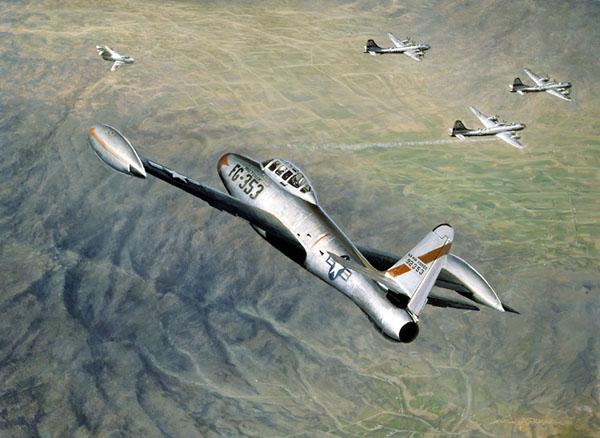
Formed crews units Squadron received 31 MiG-15. Planes packed in special boxes, loaded on the railway platform and sent under guard to China. "In order to spend less on a long trip, the personnel of the Air Division did not dress in civilian clothes, but simply withdrew from all soldiers and officers shoulder straps, flashes, decals, so apparently we are all at once began to look not the military, and in the best case, demobilized soldiers "- says in his book Yevgeny Pepelyaev, who commanded the 196th Fighter Regiment.
The main task of Soviet aces was to cover from air attack on the Yalu River hydropower station, railway bridges in the area Gisyu and main supply routes of the Chinese Volunteers and troops of North Korea. This explains the tactics of air battles. Soviet aces had to be air-shield, they do not attack as much as defended - in contrast to the Americans, from the first days began to actively bomb not only military, but also the peaceful objects. Tens of thousands of gallons of napalm were dropped every day on the Korean settlements. Prior to the intervention of Soviet aviation dominance of the Americans in the Korean skies were unconditional.
Terms of mimicry
Almost all of the air battles took place over the territory of the DPRK. If downed in South Korea pilot picked up the American rescue teams would appear to accuse the Soviet Union of interfering in the war. Our diplomats have also continued to insist that Soviet troops in Korea is not, and the Americans were in no hurry to expose them - a situation already was heart-pounding. Soviet pilots were not in possession of identity documents, and wore Chinese form: chinos blue jacket khaki calf boots. In the pocket of his jacket adorned with hieroglyphics: "People's Liberation Army».
But the Chinese form is not saved from the tragic misunderstandings. So, in 1951 Parachute Senior Lieutenant Yevgeny Mikhailovich Stelmakh (1923-1951) took over the Chinese American. He fired. Stelmach himself, believing that he is dealing with the South Koreans, he began to shoot. As a result, he shot himself, not wanting to be captured.
More than half of the losses MiGs was the fact that the pilot to have to leave the damaged plane. Most aircraft lost during the landing. Airfields first line (Antung, Dapu, Myaogou) located close to the sea, and from the sea MiGs go categorically forbidden: Soviet pilot was not supposed to be captured Americans controlled the sea. Therefore, "Sabres" tried to attack the nearby airfields - landing on a straight plane was on a landing gear and flaps, that is, was not ready to repel an attack, or evade it. These frames were made pilot "Sabre" May 14, 1953. The pilot of the downed MiG catapulted. Photo: USAF
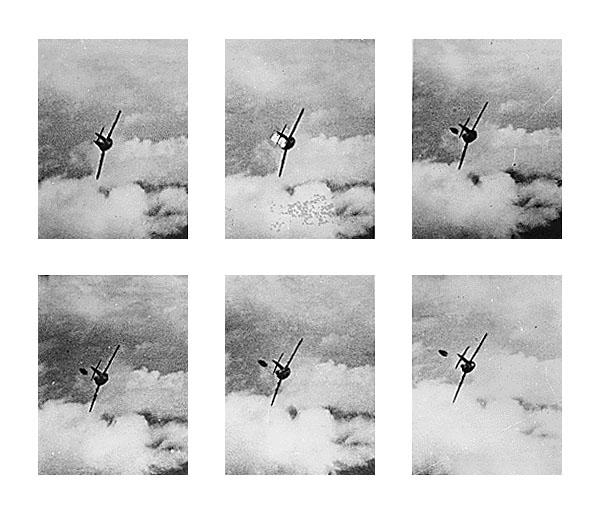
The situation is complicated by the fact that in the air were instructed to speak only in Korean.
To do this, we are almost two months learning to command the air in the Korean language, and for tips on his right knee held tablet with instructions in Russian and Korean, - says Sergey Kramarenko. - I must say that during flight training to deal with the command on the Korean situation was more or less successfully. Then there was time to look at the plate and give the command: "Turn right" or "turn left". But when it came to fighting and sometimes stayed until the death of a second, all the Korean team immediately volatilized, and all the radio went exclusively in Russian.
In letters to families were forbidden to mention participation in hostilities, diaries and photograph too, it was impossible.
Based defensive purposes, it was decided not to mask the MiGs, but to make them more visible. The fuselage and wings of the aircraft, made of silver aluminum, coated with varnish and more in bright sunshine could be seen for tens of kilometers. American pilot noticed a timely appearance of Soviet aircraft and care of the coastline.
Three MiG-29 attack. Photo: USAF

Already the first fight in the sky proved that American jets F-80s "Shuting Star" and the F-84 "Thunderjet" significantly inferior MiGs speed, rate of climb and armament. The fighting ended in their flight. To remedy the situation, at the beginning of 1951, the US Air Force immediately sent to the Korean Peninsula newest fighters - F-86 "Sabres". Yielding Miguén in the climb, and specific impulse, they surpassed it in maneuverability, greater flight range and set speed in a dive. But MiG has the advantage in arms: three guns (two 23 mm and one 37 mm) Effective range of 800 meters against 12 caliber machine guns 6, 7 with a range of 400 m.
However, the MiGs had to deal in the air, not only Americans, but also with the military of other countries serving under the UN flag. So, its military strength granted and Australia. However, the fighting qualities of Australian pilots and equipping their aircraft was such that after the first meeting with Soviet aces of sixteen machines, only four survived.
Soviet "shield" of the Korean sky forced Americans to reduce the activity of fighting small groups of fighter-bombers. Stopped daily flights scouts and bombers. A period of major air battles of groups of F-86 with MiGs.
One of the most popular American air raids took place April 12, 1951, when the Americans tried to bomb the railroad bridge across the Yalu River near Sinuiju settlement. It was the only railway line, on which supply Korean troops. In the battle involved more than forty B-29 bomber, operating under the guise of some hundreds of F-80 and F-84, divided into small groups. In addition, the group participated in the raid snare of F-86, about fifty planes. In a reflection of this flight from the airfield Antung been raised about fifty MiGs. The battle took place at a height of 7-8 thousand. M for 20 minutes. MiGs pairs and fours attacked a group of B-29, not paying attention to the support group. It was finally shot down 14 American planes. Two Soviet aircraft were damaged, but soon, troubleshoot them back into operation.
Total in this battle over the river were able to break only three American aircraft. They dropped three six-ton radio-controlled bomb explosion which injured by one of the pillars of the bridge - but after a few days of the strategically important bridge was restored. The US Air Force for the whole week has been declared mourning for the dead pilots.
64th Fighter Air Corps conducted military operations in Korea for almost three years. In total, during this time it was shot down enemy planes in 1525, 1099 of them were shot down by the aircraft. Soviet losses amounted to 319 MiG-15 and La 11, in the fighting fell to 120 pilots.
It is difficult to understand how many planes lost in the air war over Korea, American and Soviet Air Force. Each party exaggerates its victories. One thing is clear: if a tenfold numerical superiority of the Americans have not been able to bomb the city and the power of North Korea and win air supremacy.
The Americans have not been able to prove that they are not fighting Koreans: they failed to produce a single prisoner of the Soviet pilot. But they perfectly understand who fight them. And understand that the main carrier of nuclear weapons - a bomber «B-29" - will not be able to fly even 100 kilometers of territory where there is a Soviet fighters, and not be shot down. Before the advent of ballistic missiles, nuclear war has become impossible. The Korean War ended in a draw. It lost to the Koreans, and won all the rest.
HERE
Source:
Sixty years ago, on 1 November 1950, for the first time in a dogfight aircraft met the two superpowers: Soviet pilots managed four MiG-15 and the three American "Mustang» (P-51 Mustang). It happened during the Korean War (1950-1953), which began as a civil and almost became the prologue of the third world.
US planes "Twin Mustang» F-82 and "Mustang» P-51. Photo: USAF

Korean guardians
The issue of how after the Second World do with Korea, annexed by Japan in 1910, the leaders discussed the USSR, USA, Great Britain and China repeatedly. During the Cairo Conference in November 1943, Roosevelt, Churchill and Chiang Kai-shek agreed that Korea would be given the freedom and independence - but not immediately, and "in due time", through the introduction of the transitional system of international trusteeship. It first was about forty or fifty years. At the Tehran and Yalta Conference, Stalin actually joined the Allied decision of principle he had no objection, but stressed, however, that the sovereignty of tightening is not necessary - "the sooner, the better».
I must say, with the idea of international trusteeship contrary to accepted international principles of the right of nations to self-determination. Why not just release the Korean people from the yoke of Japanese and not give them the right to decide the fate of their country? It is an unfortunate contradiction was generated largely distorted picture of the situation on the Korean peninsula, which is reflected in the special report of the study group Arnold Toynbee (Arnold Joseph Toynbee, 1889-1975), with whom the British Foreign Office and the US State Department learned in January 1945. The report stated that the Koreans do not have the necessary political experience in the management of a modern state and not able to perform the administrative functions at the professional level. It was noted that the Koreans characterized by increased susceptibility to both squabbles between individuals and between different political factions. The report indicated that the Koreans need to instruct on the right path, to imbue them with administrative skills, learn how to effectively govern. Hence the idea of trusteeship, to become interested in strengthening its position in the region, the country is extremely low.
After the end of World War II and Korea's liberation by Soviet troops in the north and the south of the US, in December 1945 it passed the Moscow Conference of Foreign Ministers of the USSR, the USA and the UK, dedicated to the Korean issue. Koreans themselves were not invited to. In order to solve the urgent problems of decolonization, it was decided to form a provisional Korean democratic government and bilateral US-Soviet Commission. But by and large did not work, the negotiations have stalled. The Soviet Union had already come up with proposals on the simultaneous withdrawal from the peninsula of Soviet and American troops and invite representatives of the Korean people to participate in discussions on the unification of the country, but the UN General Assembly, US officials have made rejection of the proposal.
Gradually, under the looming US-Soviet confrontation, the two military occupation zones become a separate state. Formally split Korea into North Korea, led by Kim Il Sung and the Republic of Korea, headed by Syngman Rhee was issued in 1948. Each state considered itself the sole legitimate representative of the Korean people and to make plans for the forcible reunification.
In September 1949, Kim Il Sung appealed to the Kremlin to authorize a military invasion of northerners to the South in order to unite the country, but was refused, motivated by the fact that he does not have the required superiority of the armed forces.
In the Korean War the USSR de jure did not participate. However, the role of Soviet aces in the conflict unleashed by Kim Il Sung, with the approval of Stalin, is difficult to overestimate. For three years they served as North Korea's shield, not allowing the Americans to bomb civilians and destroying household objects. Photo: USAF

However, in April and May 1950 during confidential talks in Moscow with Kim Il Sung, Stalin reversed its position and gave "good". World's strategic balance, in his opinion, has changed in favor of socialism - October 1, 1949-th power in China, the Communists came, moreover, were carried out field trials of the first Soviet nuclear bomb. Stalin did not want nevertheless alone wage a war on the Korean peninsula, he insisted that Kim Il Sung should enlist the support of Mao Zedong. The Soviet Union will help, but if the game will come to China. Do not nap in the meantime, and Syngman Rhee, it has already received assurances from the Americans in military aid, the country is actively arming.
Tension mounted. Only since the beginning of 1949 to early 1950 was more than 1,800 border armed conflict, that is, the armed clashes of 2-3 per day. Finally, June 25, 1950 began the offensive forced Korean People's Army on the borders of the 38th parallel to the Nakdong River Basin. The first weeks were successful for Kim Il Sung, under the control of the government of Syngman Rhee left only 10% of South Korean territory.
The UN Security Council has reacted with lightning speed - in the first day of the war, North Korea has been recognized as the aggressor, and on June 27 adopted a resolution number 83 with the recommendation of the UN member states to provide military assistance to South Korea. So the Americans unleashed hands - now they got the right to defend their interests in the Far East under the guise of peacekeeping UN flag.
USSR de jure in the war did not participate. Soviet diplomats from the first days of the conflict, emphasizing the innocence of the Union, sought to prove that the conflict is a purely internal matter, and the Korean people have the right to speak in favor of a scenario of national sovereignty. But Moscow and Beijing were well aware that the disappearance of North Korea - "outpost of socialism" in Northeast Asia - a huge geopolitical inflict damage Sino-Soviet coalition. In such a critical situation, it was decided to provide direct military support for North Korea's exhausted army China - the ground forces and the Soviet Union - Air Force. In accordance with the decision of 25 October 1950 it began a massive entry of 250 thousand to Korea. "Chinese People's Volunteers," and the Soviet Union began to shift to the Far East pilots and planes.
The first ruler of the North Korean state, Kim Il Sung with Chinese volunteers

Soviet umbrella over Korea
Before the real instigators of the massacre came from behind the scenes, the combat aircraft structure between North and South is not impressed. At the disposal of the DPRK was one Air Division, in which the number of about 2 800 people and 226 obsolete Soviet-made planes. The troops of the Republic of Korea had about three thousand people and 60 aircraft. Air Force were involved from the first day of the war - 25 June 1950 50 Air Force planes raided the DPRK to South Korea's Gimpo airport. But Korean aviation capacity was small and a significant role in military operations did not play.
Syngman Rhee count on the support of the Americans. By June 1950, the US Air Force in the Far East consisted of three air armies in 1172 and holds the aircraft. During the war the park was doubled. The most powerful and training was the 5th Air Army, which had combat experience of the Second World. Based on her well-equipped airfields located in Japan and South Korea.
As for the Soviet Air Force, the information about its involvement in the Korean conflict was officially available for several decades. The first publications began to appear only in the 1990s, and especially valuable among them are the memories of the participants of events.
In October 1950 it was decided to send to Korea 324 th Air Division-destroyers. The structure of the division entered the 176th Guards under the command of Lieutenant Colonel Koshel and 196th Fighter Wing from the part of the service under the command of Lieutenant Colonel Pepelyaeva. Later, in November 1950, this division will be part of the 64th Fighter Air Corps. Flying composition formed exclusively of volunteers. Participants remembered the events that most pilots, mindful of the Second World War, showed little eagerness to go to the Korean peninsula. Still, risk their lives by supporting a friendly country, it is not the same as fighting for the freedom of the motherland.
Korean War is considered to be a kind of testing ground for new military equipment. In this battle for the first time tested its capabilities jet fighters, reconnaissance planes, fighter-bombers. Particular importance was attached to a confrontation of the Soviet MiG-15 and the American "Sabre» F-86. Figure 1951 "MiG Alley". MiG Alley Soviet pilots called controlled air corridor along the southern shore of the Yalu River. Illustration: William S. Phillips / National Guard

Formed crews units Squadron received 31 MiG-15. Planes packed in special boxes, loaded on the railway platform and sent under guard to China. "In order to spend less on a long trip, the personnel of the Air Division did not dress in civilian clothes, but simply withdrew from all soldiers and officers shoulder straps, flashes, decals, so apparently we are all at once began to look not the military, and in the best case, demobilized soldiers "- says in his book Yevgeny Pepelyaev, who commanded the 196th Fighter Regiment.
The main task of Soviet aces was to cover from air attack on the Yalu River hydropower station, railway bridges in the area Gisyu and main supply routes of the Chinese Volunteers and troops of North Korea. This explains the tactics of air battles. Soviet aces had to be air-shield, they do not attack as much as defended - in contrast to the Americans, from the first days began to actively bomb not only military, but also the peaceful objects. Tens of thousands of gallons of napalm were dropped every day on the Korean settlements. Prior to the intervention of Soviet aviation dominance of the Americans in the Korean skies were unconditional.
Terms of mimicry
Almost all of the air battles took place over the territory of the DPRK. If downed in South Korea pilot picked up the American rescue teams would appear to accuse the Soviet Union of interfering in the war. Our diplomats have also continued to insist that Soviet troops in Korea is not, and the Americans were in no hurry to expose them - a situation already was heart-pounding. Soviet pilots were not in possession of identity documents, and wore Chinese form: chinos blue jacket khaki calf boots. In the pocket of his jacket adorned with hieroglyphics: "People's Liberation Army».
But the Chinese form is not saved from the tragic misunderstandings. So, in 1951 Parachute Senior Lieutenant Yevgeny Mikhailovich Stelmakh (1923-1951) took over the Chinese American. He fired. Stelmach himself, believing that he is dealing with the South Koreans, he began to shoot. As a result, he shot himself, not wanting to be captured.
More than half of the losses MiGs was the fact that the pilot to have to leave the damaged plane. Most aircraft lost during the landing. Airfields first line (Antung, Dapu, Myaogou) located close to the sea, and from the sea MiGs go categorically forbidden: Soviet pilot was not supposed to be captured Americans controlled the sea. Therefore, "Sabres" tried to attack the nearby airfields - landing on a straight plane was on a landing gear and flaps, that is, was not ready to repel an attack, or evade it. These frames were made pilot "Sabre" May 14, 1953. The pilot of the downed MiG catapulted. Photo: USAF

The situation is complicated by the fact that in the air were instructed to speak only in Korean.
To do this, we are almost two months learning to command the air in the Korean language, and for tips on his right knee held tablet with instructions in Russian and Korean, - says Sergey Kramarenko. - I must say that during flight training to deal with the command on the Korean situation was more or less successfully. Then there was time to look at the plate and give the command: "Turn right" or "turn left". But when it came to fighting and sometimes stayed until the death of a second, all the Korean team immediately volatilized, and all the radio went exclusively in Russian.
In letters to families were forbidden to mention participation in hostilities, diaries and photograph too, it was impossible.
Based defensive purposes, it was decided not to mask the MiGs, but to make them more visible. The fuselage and wings of the aircraft, made of silver aluminum, coated with varnish and more in bright sunshine could be seen for tens of kilometers. American pilot noticed a timely appearance of Soviet aircraft and care of the coastline.
Three MiG-29 attack. Photo: USAF

Already the first fight in the sky proved that American jets F-80s "Shuting Star" and the F-84 "Thunderjet" significantly inferior MiGs speed, rate of climb and armament. The fighting ended in their flight. To remedy the situation, at the beginning of 1951, the US Air Force immediately sent to the Korean Peninsula newest fighters - F-86 "Sabres". Yielding Miguén in the climb, and specific impulse, they surpassed it in maneuverability, greater flight range and set speed in a dive. But MiG has the advantage in arms: three guns (two 23 mm and one 37 mm) Effective range of 800 meters against 12 caliber machine guns 6, 7 with a range of 400 m.
However, the MiGs had to deal in the air, not only Americans, but also with the military of other countries serving under the UN flag. So, its military strength granted and Australia. However, the fighting qualities of Australian pilots and equipping their aircraft was such that after the first meeting with Soviet aces of sixteen machines, only four survived.
Soviet "shield" of the Korean sky forced Americans to reduce the activity of fighting small groups of fighter-bombers. Stopped daily flights scouts and bombers. A period of major air battles of groups of F-86 with MiGs.
One of the most popular American air raids took place April 12, 1951, when the Americans tried to bomb the railroad bridge across the Yalu River near Sinuiju settlement. It was the only railway line, on which supply Korean troops. In the battle involved more than forty B-29 bomber, operating under the guise of some hundreds of F-80 and F-84, divided into small groups. In addition, the group participated in the raid snare of F-86, about fifty planes. In a reflection of this flight from the airfield Antung been raised about fifty MiGs. The battle took place at a height of 7-8 thousand. M for 20 minutes. MiGs pairs and fours attacked a group of B-29, not paying attention to the support group. It was finally shot down 14 American planes. Two Soviet aircraft were damaged, but soon, troubleshoot them back into operation.
Total in this battle over the river were able to break only three American aircraft. They dropped three six-ton radio-controlled bomb explosion which injured by one of the pillars of the bridge - but after a few days of the strategically important bridge was restored. The US Air Force for the whole week has been declared mourning for the dead pilots.
64th Fighter Air Corps conducted military operations in Korea for almost three years. In total, during this time it was shot down enemy planes in 1525, 1099 of them were shot down by the aircraft. Soviet losses amounted to 319 MiG-15 and La 11, in the fighting fell to 120 pilots.
It is difficult to understand how many planes lost in the air war over Korea, American and Soviet Air Force. Each party exaggerates its victories. One thing is clear: if a tenfold numerical superiority of the Americans have not been able to bomb the city and the power of North Korea and win air supremacy.
The Americans have not been able to prove that they are not fighting Koreans: they failed to produce a single prisoner of the Soviet pilot. But they perfectly understand who fight them. And understand that the main carrier of nuclear weapons - a bomber «B-29" - will not be able to fly even 100 kilometers of territory where there is a Soviet fighters, and not be shot down. Before the advent of ballistic missiles, nuclear war has become impossible. The Korean War ended in a draw. It lost to the Koreans, and won all the rest.
HERE
Source:

